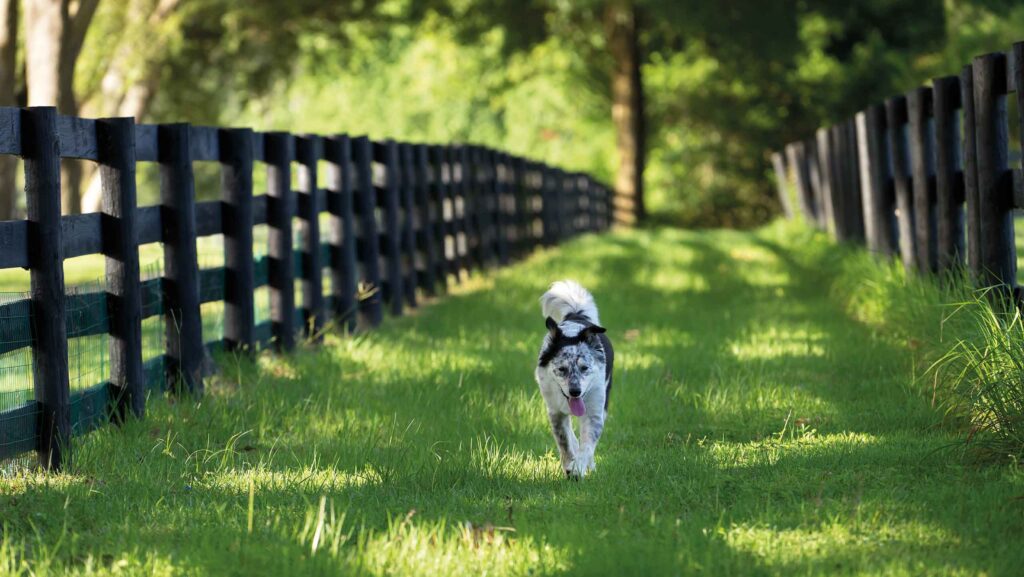Business Clinic: Do BNG rules apply to dog walking paddock?
 © Adobe Stock
© Adobe Stock Whether it’s a legal, tax, insurance, management or land issue, Farmers Weekly’s Business Clinic experts can help.
Here Lucy George, associate with Carter Jonas advises on a diversification planning question.
See also: Business Clinic – can council add agricultural occupancy condition?
Q: Does biodiversity net gain apply if I want planning permission to set up a dog exercise paddock on my farm?
The area in question is a 0.81ha unfenced field, with a farm track leading up to it.
A: Biodiversity net gain (BNG) became mandatory in February this year for the majority of planning applications, which means being able to demonstrate a measurably positive impact on biodiversity compared to what was there before, with an uplift of at least 10%.
Some local authorities even have emerging or adopted policies mandating a 20% net gain.
This can either be provided on-site or, if that’s not feasible, off-site on neighbouring land or by purchasing biodiversity units in the open marketplace.
You can also use the national credit scheme established by the secretary of state, but this is very much a last resort, and biodiversity credit pricing discourages this.
Defra’s statutory metric is used to calculate the 10% and takes into account a range of components and multipliers as a proxy for biodiversity.
There are limited exemptions from the statutory BNG requirement, including developments that have an impact on less than 25sq m of on-site habitat, or 5m of linear habitats such as hedgerows.
If needing to establish a new access where taking out hedges or going through a field, the process may need to comply with the BNG requirement.
The challenge may also be the paddock itself, depending on the baseline habitat type and condition, as well as any shelters or additional parking areas.
You may then have to deliver the 10% net gain either on-site or on land elsewhere, and comply with the statutory framework; potentially entering into a legal agreement, be that a Section 106 or conservation covenant, for a minimum 30-years, to establish, manage and monitor the habitat and hedgerow creation and/or enhancement.
This could involve significant costs, and in some cases, the financial impact of BNG can make a development unviable.
Assuming that the existing paddock has a broad habitat of grassland, it would be worth speaking to an ecologist as to what impact hosting multiple dogs on the area could have to its condition.
The de minimis exemption could still apply, particularly if you are able to use an existing track for access, as the metric typically attributes a nil number of habitat units to built linear features and sealed surfaces.
If the site does not qualify for an exemption, and the gain can be provided on-site, then if the habitat enhancements are considered “non-significant”, they may not require a habitat management and monitoring plan, legal agreement or a commitment to maintain them for 30 years.
So, BNG may apply to a dog exercise paddock but it will be very site specific, and expert advice is essential.
Other considerations to bear in mind if you decide to proceed:
- Security – you will need to consider whether CCTV is needed and how the site will be managed when open
- What will the booking system be?
- Seasonal issues – if you open the paddock up all year round, managing mud might be a concern
- Site selection – take care, you will need the local community on side. Consider the capacity of the site and time allowances for changeover periods, as well as noise pollution. If you decide to install floodlights so that the paddock can be used in the evenings in winter, consider how that could affect any nearby residential properties
- An electrical supply and access to water should be provided
- The planning application – consider any visual and spatial impact on the openness of green belt or national landscape areas where relevant. Avoid selecting sites with environmental and/or heritage designations
- Footpaths – are any nearby and if yes, do they need rerouting?
- Is there any poisonous vegetation that needs removing?
- Research adequate insurance requirements and their costs
- Check for any restricted covenants on the land, such as a stipulation that it should be used for agricultural purposes only
- Check the potential tax implications and any reliefs that may be affected
- Access to the site – if this is via a farm track, is it appropriate for frequent traffic and all vehicle types, how close is it to the public highway and what are the parking provisions?
- Livestock – will members of the public be close to farming operations?
- Fencing and facilities – the site will need fencing of an appropriate height to make sure it is sufficiently secure, as well as any other infrastructure such as waste facilities and agility equipment.
Do you have a question for the panel?
Outline your legal, tax, finance, insurance or farm management question in no more than 350 words and Farmers Weekly will put it to a member of the panel. Please give as much information as possible.
Email your question to FW-Businessclinic@markallengroup.com using the subject line “Business Clinic”.
